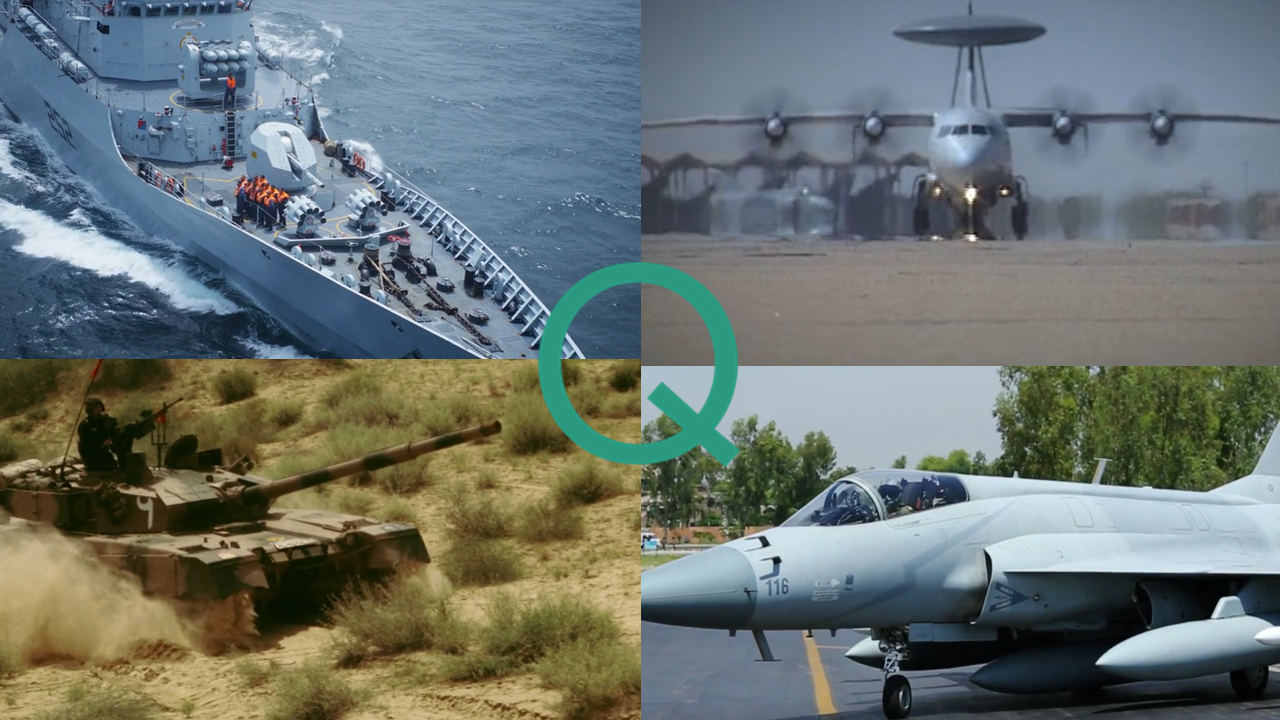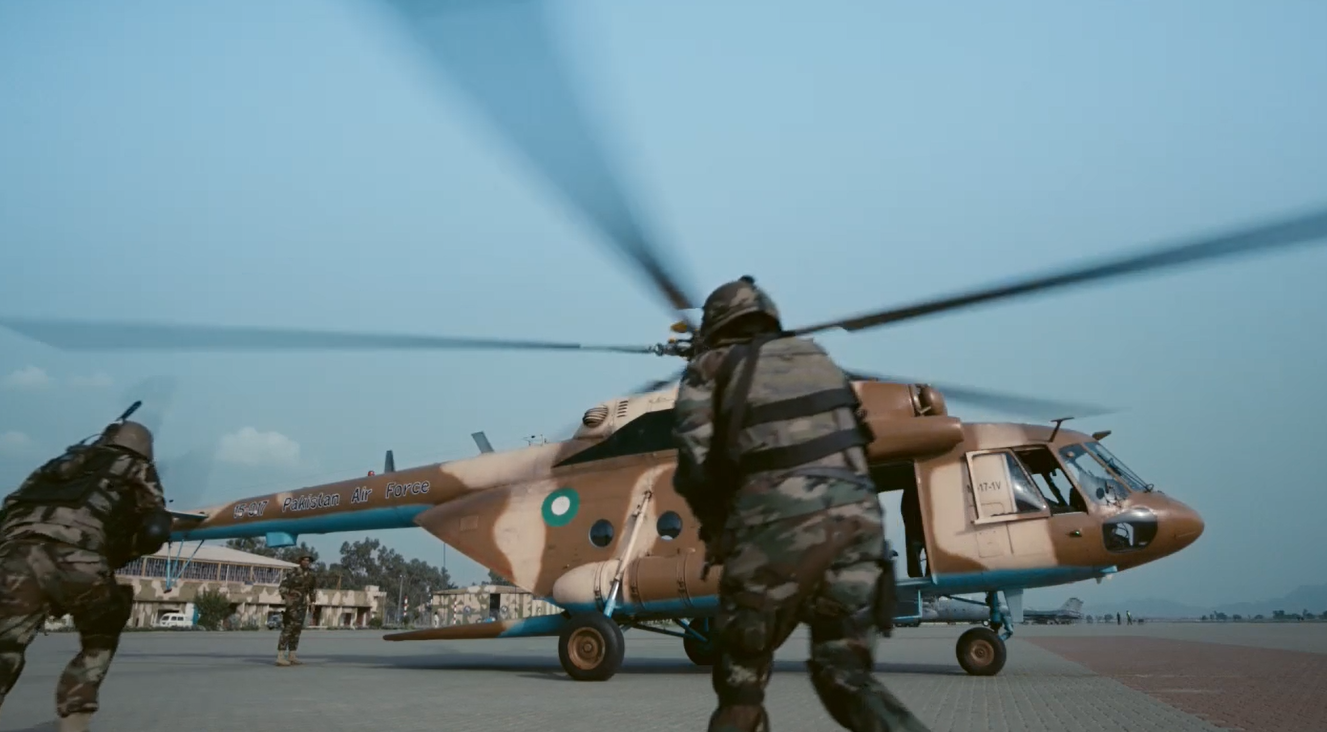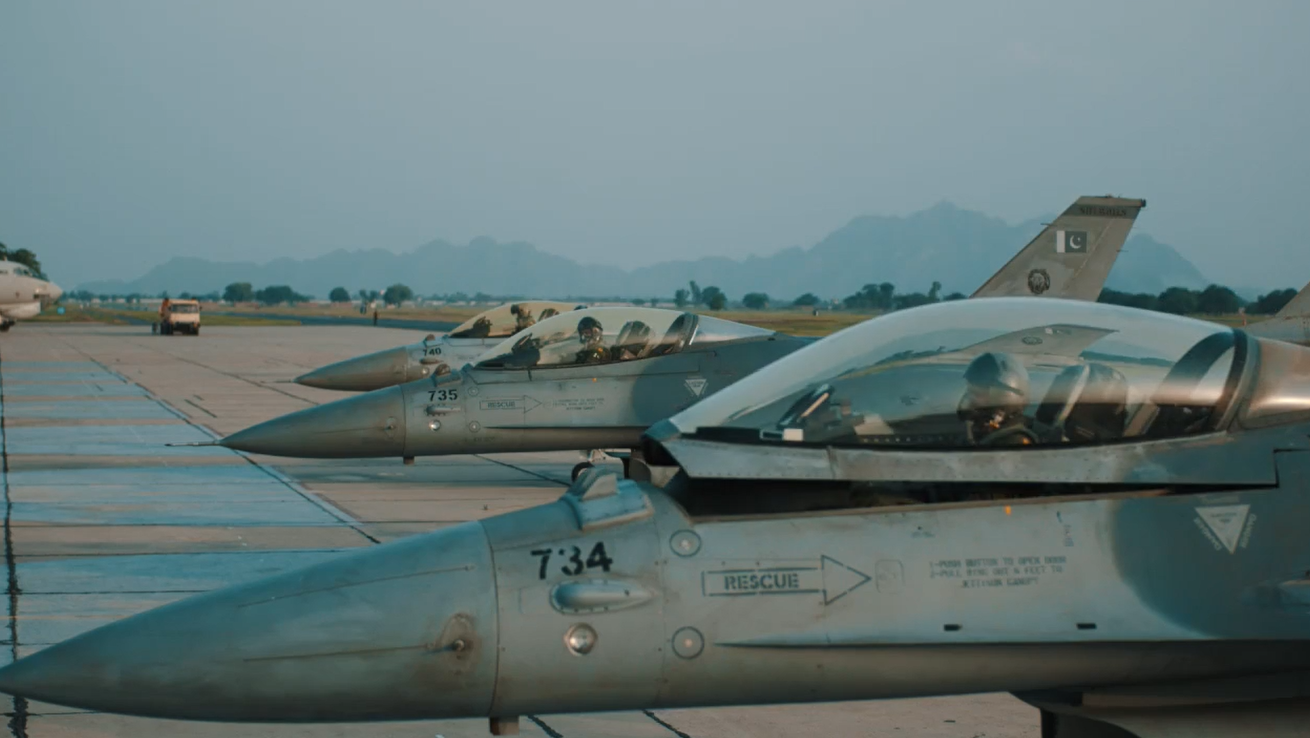2926Views 22Comments

This Week in Defence News
19 February 2016
Every Friday, Quwa offers coverage and short-form analysis of various news topics. It can be a challenge to offer in-depth reporting for every interesting news piece, so we invite you, our readers, to engage and share with us your knowledge and insights on issues and topics that interest you the most.
Be sure to get in touch with us on Facebook and Twitter!
A look at Pakistan’s F-16 purchase
On 12 February the U.S. State Department approved Pakistan’s request for eight F-16C/D Block-52+.
The $700 million U.S. sale involves two single-seat F-16C and six two-seat F-16D aircraft. In addition, it includes 14 ‘Joint Helmet Mounted Cueing Systems’ (JHMCS) and eight ALQ-211(v)9 ‘Advanced Integrated Defensive Electronic Warfare Suites’ (AIDEWS).
Besides equipment, the purchase also includes “spare and repair parts, support and test equipment, publications and technical documentation, personnel training and training equipment.”
The possible sale has drawn significant controversy, especially towards the White House’s desire to pass the deal under the Foreign Military Financing (FMF) program. The FMF program was designed to help U.S. partners acquire military equipment with subsidies and term-financing plans. Under the pre-text of supporting the Pakistan Air Force (PAF)’s counterinsurgency (COIN) efforts, the U.S. government is looking to subsidize almost half of the value of the possible F-16 sale.
As expected, the F-16 sale has drawn India’s ire, but it is important to put the issues driving this sale into focus, so as to understand the motivations of each relevant party. For the U.S., the F-16 is a key foreign policy tool, a means to maintain influence in Pakistani security circles.
Granted, the F-16s could (and will) be used to support the PAF’s COIN efforts, but it is not as if the PAF is short on enough fighters capable of engaging in the task. Moreover, if Washington was fully intent on building the PAF’s COIN capacities, it would push it to acquire a COIN-centric platform such as the A-29 Super Tucano or help Pakistan expand its AH-1Z order. The fact that the F-16s are being sold with the Exelis AIDEWS, an integrated electronic warfare system meant to defend against aerial threats, is a clear indication that the U.S. is looking to partly meet Pakistan’s defence needs (vis-à-vis India).
For the PAF, these eight F-16s will raise its F-16 fleet to 84 aircraft: 26 Block-52+, 45 Mid-Life Update (MLU) and 13 Block-15 ADF. The PAF might be looking to gradually raise its F-16 fleet to the originally planned force of 110 (when it ordered 71 F-16 Block-15OCU in the late 1980s). This could be done with incremental purchases of new-built F-16s as well as possibly used ones. Unfortunately, it is unclear whether the PAF will (or is even able to) secure additional armaments for the F-16, such as the AIM-9X within-visual-range air-to-air missile (WVRAAM), AGM-154 Joint Standoff Weapon (JSOW), or SOM cruise missile (developed by Turkey, but will also be produced by Lockheed Martin).
Iran may acquire Sukhoi Su-30SMs
Iran has signaled its intention to buy Su-30SM multi-role fighters from Russia.
If the fighter deal comes to fruition, Iran will essentially procure the Su-30SME, the export variant of the Su-30SM, which in turn was the latest Su-30-variant. While a multi-role fighter, Iran may be interested in using the Su-30s in a strike-oriented role; the fighter’s heavy payload (12 hardpoints for 8000 kg in munitions) and twin-seat arrangement make it ideal for such a role.
The Su-30SME will go a significant way in recapitalizing Iran’s air force, which is beset with an ageing and increasingly unserviceable fleet. It will be interesting to see if the Chinese FC-20, i.e. the export variant of the medium-weight J-10A, is also brought into the mix. The Su-30SMEs could be bought to replace the F-14s, while the FC-20s could be used to phase-out lightweight fighters such as the F-5 Tiger-II as well as rebuild Iran’s numerical fighter strength.
In the coming days, Iran will also receive the first batch of S-300 long-range surface-to-air missile (SAM) systems from Russia. The $800 million U.S. deal was signed in 2007, but was suspended in 2010 due to the United Nations placing an arms-embargo on Iran. The deal was resumed in April 2015.



22 Comments
by jigsaww
F-16s and every weapon in Pakistani inventory will be used as and when required to counter indian aggression. If india would like US to stop selling Pakistan F-16 fighters, it first needs to give up its status of largest exporter of terrorism inside Pakistan. Terrorism against Pakistan is now a publicly announced policy of Indian government, echoed by its PM, defence minister, and NSA several times. And as long as indians keep exporting terrorists into Pakistan to kill innocent children, F-16s and every tactic will be used to send indian assets in Pakistan packing, and when the time comes, F-16s will also be used to carry out deep strikes inside Indian territory also – all in the same spirit of defeating terrorism.
by Abdul Rashid
Oh I just love your comment! Now just patiently waiting for the inevitable frantic left-right head tilting response from across the border, “we make this, we make that, Pakistan cannot make a safety pin”!
On a more serious note, Turkey’s SOM missile looks a potent anti ship weapon to have on the JF-17 if possible should the F16 avenue be blocked. Especially the longer range variant with advanced targeting. I know Pakistan has Chinese anti ship options already but the SOM could add a deadly long range punch. Besides, always wise not to put all eggs in the same basket. Sometimes diversification is good. Like to see much closer defence cooperation between the two brotherly countries.
by jigsaww
Never mind the Indians. This entire nation needs a constant dosage of false sense of pride to keep its rotten soul alive. India had never had any place in course of defining history and it will never have any. The sole purpose of their insecure existence is Pakistan obsession and finding out ways to destabilise it. Without Pakistan, it’s a big version of countries like Nepal and Burma, insignificant and irrelevant.
SOM may turn out to be good system, but with Pakistan having Ra’ad already deployed for even longer ranges, there isn’t much space for SOM. For ASh roles, Pakistan will rely on CM-400 AKG and C-802 besides the harpoons and exocets. In worst case, Ra’ad can be tweaked for anti shipping roles too, but that role is covered with specific missiles. The big plus with Ra’ad is its integration with COMPASS, without having to rely on GPS. It’s truly a strategic weapon in Pakistan’s arsenal.
by saqrkh
To make Ra’ad anti-ship capable, Pakistan would just need to incorporate a terminal IIR or active radar seeker. It’s possible that has already been done as ISPR even said the Ra’ad offers standoff capabilities on “land and at sea.”
by jigsaww
ah, perfect.
by Mohsin E.
Consider the alternative. Instead of equipping the Ra’ad with such seekers, keep them cheap, and use them en-mass to flood and saturate enemy air-defenses, while sneaking in a few supersonic CM-400 AKGs, to go for the actual kill.
by Abdul Rashid
Hi Mohsin. If my memory serves me right, you were planning to do an article for Quwa covering your experience during your visit at PAF Base Mushaf. Is that still on the cards?
by Mohsin E.
I couldnt get an official clearance from the PAF so that’s not on the cards anymore.
by Ashi Sidhu
Sorry bro but u r bound lose
Ra’ad is subsonic missile which will be easily intercepted by barack 1 or more advanced barak 8 missile defense system on ship which are Indo-Israeli missiles
But there is no missile defense system which will be able to stop the fastest cruise missile supersonic brahmos(Indo-Russian)
by jigsaww
You have no idea whatsoever of what you just said, AND you are completely biased in your understanding. Take from me, the possible reason is that most of Indians get their defence education from overly hyped Indian news and discussion shows, hence the obvious flaws. All the more proof to this is that you are simply stuck on the terms of “supersonic” and “subsonic”. In military spheres, such terms are only used for marketing and attracting sales. The people who engineer the technologies rubbish such comments without even weighing them for a single look. It is not without a reason that the one of the world’s best cruise missile is the subsonic tomahawk missile. Do you know what that means?
Brahmos is a good addition to indian arsenal but it still does not qualify to be called a true cruise missile, for it lacking stealth and terrain hugging features,. Brahmos is NOT a true cruise missile. Ra’ad on the other hand, is a terrain hugging stand off weapon with very great CEP accuracy. It can be integrated with GPS, COMPASS or fly with INS. Barak 1 is a point defence short range SAM that is not even intended for cruise missiles interception.
Dont you ever think before speaking? It’s a shame.
by MT
Raad was built by Denel dynamics.
its poor 90 era technology.They had contract to make and integrate it with mirage..Pak simply makes those airframe from imported chinese metal.
Engine,Guidance and inertial navigation is also imported. South Africa handed over software, airframe assembling tools and design of CM.
How does lack of stealth for Brahmos affect pak if it doesn’t have any SAM to detect and destroy it .
by MT
You can import the seeker but given the design and tech is imported from south africa denel dynamics, its bot easy to integrate and fine tune
Pak doesn’t have that matured aerospace industry to integrate raad with jf17.
Denel dynamics have been approached again by pak to help it integrate with jf17.
by MT
Barak 8 system have MF STAR AESA radar that can detect almost all flying object minus F22.
its most potent sea defense system after Aegis
by Ashi Sidhu
even a fool would know Israeli technology is better than pak tech
i hope pak military planners have better info than u on brahmos anyway be ready now for hypersonic brahmos
by jigsaww
Upvoting yourself does not make you any more correct.
Brahmos is a russian-indo JV. Israel ? Where does israel come in here from.
Like i said, you don’t know what you are talking about. You just want to write because you have two hands.
by jigsaww
Ra’ad is an INS capable system. Get your education right. IT does not ALWAYS needs GPS and COMPASS. The perception that GPS might be made unavailable is only as assumption for creating fool proof strategy and a justified one to Pakistan to counter. In that case, you yourself are relying on GPS and GLONASS. Don’t get too hyped. The fact that i am able to do an analysis of the possible problems and weaknesses does not give you any right to throw out your half cooked stories with cheap jibes. It’s the same problem with both India and Pakistan. Russia is more likely to stop GLONASS coverage to india than china is to pakistan of compass. Same with USA.
Don’t throw back my analysis at me.
by MT
1. Ra’ad is INS capable but Pakistan dont manufacture FOG(fiber optic gyroscope) Inertial navigation system
2. India is not dependent on GPS,GLONASS- Indian local IRNSS is partially in place with 5 satellites in GSO,GTO orbit-
Next 2 satellites are to be launched over next 1month.
3. Indian IRNSS will have range of 2000 KM+- /South,North,East,West from Indian land mass which makes it accessible to Full china,Vietnam, Saudi arabia, Russia!
India doesnt need Russian GLONASS signals after June 2016!
by jigsaww
yeah, we’ll see about that.
by jigsaww
Get out from your cave.
Ra’ad is a deployed system in service.
by saqrkh
Agreed. The Ra’ad was designed to take out stationary targets anyways. If anything, range-extension and sub-munitions dispensers ought to be on the cards, which will enable it to be a good solution against a wide range of fixed targets.
by Mohsin E.
Sub-Munitions, that’s an important subject (of strategic proportions, as I’ll justify below) for an article that I hope to read on your site in the future. AT cluster munitions can be manufactured in Pakistan, but I don’t think GUIDED-sub-munitions are available (or are they?) With India’s acquisition of the CBU-97, the threat to our armored corps has significantly increased. But this knife cuts both ways, and with India’s “cold start” strategy (relying on massed armor), beyond the nuclear option (which is far from ideal) such guided cluster sub munitions would actually be a viable conventional deterrent. Not only would it accomplish the same objective as tactical nukes, it would do so without any of the ‘fallout’, geopolitical or literal.
by MT
Pakistan has habit of buying tested product from south africa,china–
India intends to develop, integrate their home made product with whatever delay,given the budget for 1 Indian program is peanut if compared with western R&D budget